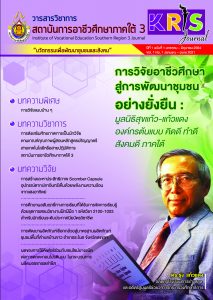Study the Influence Cycle Speed and the Feed Rate in Friction Stir Welding Aluminum 6063 Different Thickness with Slender Stirrer
Keywords:
Friction stir welding, Tailored Blank, Butt jointsAbstract
This research objectives were study the influence of cycle speed (Revolutions per
minute) and the feeding rate of the agitator. With friction stir welding, butt joints, tailed blanks of, 6063 aluminum which affects the welding strength properties with a tapered agitator. There are variables in welding: Stirring speed 300,400, and 500 RPM. Welding speed of 60,80,100 and 125 minutes respectively.
The Tensile strength test results for tapered welding tool, speed 500 is at rpm, The stir welding speed 100 mm / min. Provides a maximum tensile strength of 192 MPa.The results of comparing the fracture characteristics of the welds consist of two deficiency characteristics. The workpiece with the highest tensile strength goes for a 3 mm thickness of the workpiece. For the welding hardness test results. Workpiece with maximum tensile strength at the weld area and the shoulder of workpiece has a hardness value is at 3 mm thicker than the broken area of the workpiece. The results of the analysis of the macro-microstructures of welds with
the highest tensile strength. The tearing of 3 mm. thickness of workpiece and grain size is at 125.31 µm. Welding structure That has the characteristics of a circular structure And smaller and more detailed. Resulting in an increasing of the strength of the joint. Comparing with the main metal with a larger grain which the welds more stronger than the main metal, it is the cause of the breakdown of the test workpiece at the 3 mm. of main metal side.
References
ธรรมนูญ อินทรพล, และกิตติพงษ กิมะพงศ. (2551). อิทธิพลของตัวแปรการเชื่อมเลเซอร์ต่อสมบัติทางกลของรอยต่อชนแผ่นเทเลอร์แบล็งค์เหล็กเคลือบสังกะสีเกรด SGACD. รายงานการประชุมวิชาการทางวิศวกรรมศาสตร์มหาวิทยาลัยสงขลานครินทร์ ครั้งที่ 6 (น. 579-583). สงขลามหาวิทยาลัย สงขลานครินทร์
W.M. Thomas, E.D.N., J.C. Needham, M.G. Murch, P.Temple-Smith, C.J. Dawes. (1991). Friction Stir Butt Welding. Retrieved 20 Febuary 2021 from https://patents.google.com/patent/US5460317A/en
กิตติพงษ์ กิมะพงศ์. (2551). การเชื่อมด้วยการเสียดทานแบบกวน:การแก้ปัญหาการต่อวัสดุที่ยากต่อการเชื่อมหลอมละลาย. รายงานการประชุมข่ายงานวิชาการวิศวกรรมอุตสาหการประจำปี 2551 (น. 712-717). สงขลา: มหาวิทยาลัยสงขลานครินทร์
ธงชัย เครือผือ และคนอื่นๆ. (2551). อิทธิพลของความเร็วในการเชื่อมและรูปแบบของหัวพินที่มีผลต่อสมบัติทางโลหะวิทยาและสมบัติทางกลในการเชื่อมอลูมิเนียมผสม A356 ที่หล่อโดยเทคโนโลยีหล่อกึ่งของแข็งด้วยกรรมวิธีการเชื่อมเสียดทานแบบกวน. การประชุมข่ายงานวิชาการวิศวกรรมอุตสาหการประจำปี
(น. 933-939). สงขลา: มหาวิทยาลัยสงขลานครินทร์.
นราธิป แสงซ้าย, สงกรานต์ บางศรัณย์ทิพย์ และกิตติพงษ์ กิมะพงศ์. (2551). อิทธิพลรูปร่างตัวกวนการเชื่อมด้วยการเสียดทานแบบกวนต่อความต้านทานแรงดึงของรอยต่อชนอลูมิเนียม AA6063-T1. วารสารวิศวกรรมศาสตร์ มหาวิทยาลัยสยาม 9(2), 19-25.
R.S. Mishra, Z.Y.M.. (2005). Friction stir welding and processing. Materials Science and Engineering 50(1-2), P. 1–78.
Downloads
Published
How to Cite
Issue
Section
License
Copyright (c) 2024 Institute of Vocational Education Southern Region 3 Journal (KRIS Journal)

This work is licensed under a Creative Commons Attribution-NonCommercial-NoDerivatives 4.0 International License.






